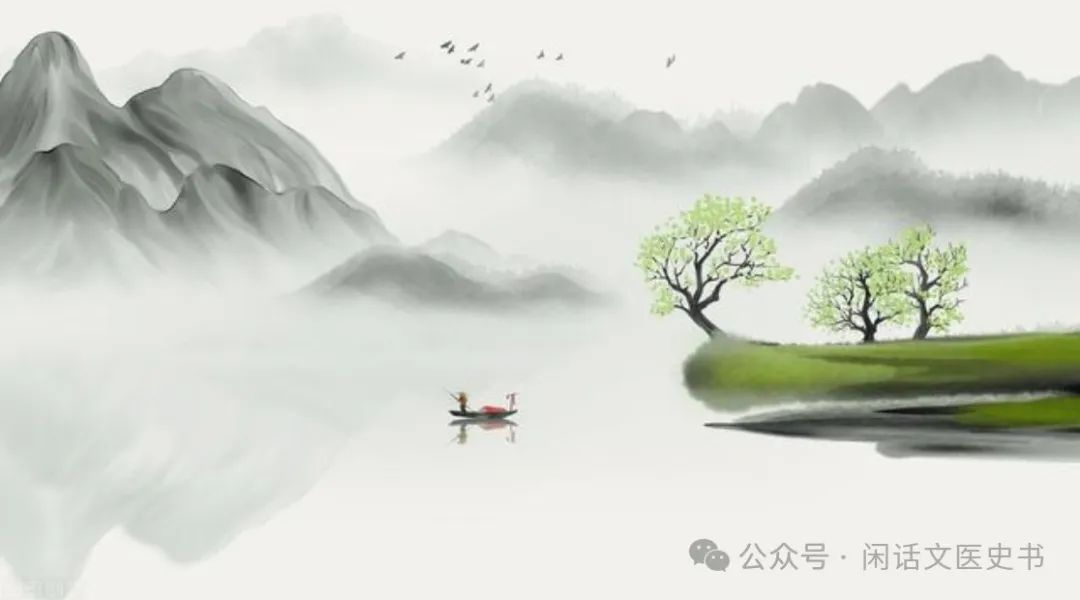An Overview of the Eight Extraordinary Meridians

One
Question: What are the Eight Extraordinary Meridians? Answer: They are the Chong (Penetrating), Ren (Conception), Du (Governing), Dai (Belt), Yin Wei (Yin Linking), Yang Wei (Yang Linking), Yin Qiao (Yin Heel), and Yang Qiao (Yang Heel).
Two
Question: Please elaborate. Answer: The Chong Mai (Chong Meridian), Ren Mai (Ren Meridian), Du Mai (Du Meridian), Dai Mai (Dai Meridian), Yin Wei Mai (Yin Linking Meridian), Yang Wei Mai (Yang Linking Meridian), Yin Qiao Mai (Yin Heel Meridian), and Yang Qiao Mai (Yang Heel Meridian).
Three
Question: What are the functions of the Eight Extraordinary Meridians? Answer: Firstly, they connect the twelve primary meridians; secondly, they regulate the Qi and blood of the twelve meridians, acting like lakes that store and irrigate the Qi and blood of the twelve meridians (similar to the function of the Chong Mai); thirdly, they are closely related to certain organs, such as the brain, marrow, kidneys, and uterus.
Four
Question: Where do the Eight Extraordinary Meridians originate and how do they circulate? Answer: The Du Mai, Ren Mai, and Chong Mai all originate from the lower abdomen, but they have different endpoints, which is a divergence from a single source. The Du Mai runs along the midline of the back, ascending to the head and face (ending at the frenulum of the upper lip). The Ren Mai runs along the midline of the chest and abdomen, reaching the chin (ending below the eye socket). The Chong Mai ascends alongside the Kidney Meridian (Shen Jing) and encircles the lips (ending below the eye socket).
The Dai Mai originates from the lower ribs and encircles the waist.
The Yin Wei Mai originates from the inner side of the lower leg, ascending along the inner thigh to the throat, where it meets the Ren Mai (Yin Wei is Yin, and Ren is Yin, thus Yin meets Yin).
The Yang Wei Mai originates from the outer side of the foot, ascending along the outer thigh to the back of the neck, where it meets the Du Mai (Yang Wei is Yang, and Du is Yang, thus Yang meets Yang).
The Yin Qiao and Yang Qiao both originate from the heel; Yin Qiao is on the inner side and Yang Qiao is on the outer side, thus they meet at the inner canthus of the eye.
Five
Question: What are the specific functions of each of the Eight Extraordinary Meridians? Answer: The Du Mai governs all Yang meridians, hence it is called the Sea of Yang Meridians. It is closely related to the brain, marrow, and kidneys.
The Ren Mai nourishes all Yin meridians, hence it is called the Sea of Yin Meridians. It governs the uterus.
The Chong Mai contains the Qi and blood of the twelve meridians, hence it is called the Sea of the Twelve Meridians and the Sea of Blood. It is closely related to women’s menstruation.
The Dai Mai restrains the longitudinal meridians of the body. All meridians run longitudinally, while the Dai Mai runs horizontally. It protects the uterus and governs leukorrhea.
The Yin Wei Mai maintains the Yin meridians of the body, governing the interior. The Yang Wei Mai maintains the Yang meridians of the body, governing the exterior.
The Yin Qiao and Yang Qiao govern the Yin and Yang of the limbs, regulating lower limb movement and sleep (eyelid opening and closing). Therefore, the main acupoints for treating insomnia are Shen Mai and Zhao Hai. These two points are the meeting points of the Eight Meridians, with Shen Mai connecting to the Yang Qiao and Zhao Hai connecting to the Yin Qiao. The Yin Qiao and Yang Qiao also govern the left and right sides of the body.
Six
Question: Are there any physicians who emphasize the treatment of diseases using the Eight Extraordinary Meridians? Answer: Yes, there are, such as Ye Tianshi in ancient times and Sun Chaozong in modern times. Of course, many physicians in both ancient and modern times have placed great importance on the Eight Extraordinary Meridians; I am just giving examples. The first I learned about was Sun Chaozong, whose works are worth studying in detail. By reading his works, one can understand the significant role of the Eight Extraordinary Meridians in treating diseases.

Seven
Question: What are the meeting points of the Eight Meridians? Answer: They are Houxi (Back Stream), Lieque (Broken Sequence), Neiguan (Inner Pass), Waiguan (Outer Pass), Zuliqiao (Foot Temporary Tears), Gongsun (Grandfather Sun), Shenmai (Shen Vessel), and Zhao Hai (Shining Sea).
Eight
Question: How are the acupoints and meridians matched? Answer: Houxi connects to the Du Mai, Lieque connects to the Ren Mai, Neiguan connects to the Yin Wei Mai, Waiguan connects to the Yang Wei Mai, Zuliqiao connects to the Dai Mai, Gongsun connects to the Chong Mai, Shenmai connects to the Yang Qiao, and Zhao Hai connects to the Yin Qiao.
Nine
Question: What are the manifestations of diseases related to the Eight Extraordinary Meridians? Answer: The “Nanjing” records: “Yang Wei manifests as suffering from cold and heat, Yin Wei manifests as suffering from heart pain. Yin Qiao manifests as Yang being slow and Yin being urgent, Yang Qiao manifests as Yin being slow and Yang being urgent. Chong manifests as counterflow Qi and abdominal urgency. Du manifests as rigidity of the spine and convulsions. Ren manifests as internal pain and knots; in men, it is seven hernias, in women, it is masses in the pelvic cavity. Dai manifests as abdominal fullness, and the waist feels like sitting in water.”
Ten
Question: Please elaborate on the diseases of the Eight Extraordinary Meridians. Answer: They can be divided into deficiency and excess, detailed as follows:
Du Mai Disease
Excess: Pain in the lower back and spine, headache, stiff neck, stroke, opisthotonos, epilepsy, mania, spasms of hands and feet, urinary retention, etc. Deficiency: Heaviness of the head, dizziness, shaking of the head, tremors, stooping, weakness of limbs, frequent yawning, forgetfulness, and low intelligence.
Ren Mai Disease Excess: Pain in the genital area or penis, hematuria, dysentery, hiccups, hernia in men, pelvic masses in women, etc. Deficiency: Women with cold and deficiency of the uterus leading to infertility, miscarriage, irregular menstruation, uterine prolapse, etc.; men with impotence, premature ejaculation, nocturnal emissions, etc.
Chong Mai Disease Excess: Chest and abdominal pain, gastrointestinal spasms, abdominal distension with Qi counterflow, retention of the placenta, etc. Deficiency: Women with irregular menstruation, miscarriage, infertility, and metrorrhagia; men with impotence, azoospermia, or oligospermia.
Dai Mai Disease Excess: Pain in the lower back and spine, groin pain, herpes zoster, leukorrhea, etc. Deficiency: Lower limb paralysis, weakness of the abdominal muscles, hernia, and leukorrhea in women.
Yang Qiao Disease Excess: Stiffness and pain in the lower back, spasms of the lower limbs, foot eversion, red and painful eyes, headache, etc. Deficiency: Insomnia, pain in the brow ridge, epilepsy, numbness of hands and feet, etc.
Yin Qiao Disease Excess: Epilepsy, spasms of the lower limbs, foot inversion, constipation, lower abdominal pain, etc. Deficiency: Drowsiness, plum pit Qi, bowel sounds, and dribbling urination.
Yang Wei Disease Excess: Chills and fever, swelling and pain in the joints, headache and neck pain, red and swollen eyes, etc. Deficiency: Night sweats, pain in the brow ridge, heat in the palms and soles, numbness, and heel pain, coldness in the knees.
Yin Wei Disease Excess: Chest and epigastric fullness and pain, lateral rib pain, herpes zoster, nausea, and esophageal obstruction, etc. Deficiency: Heart pain, bowel sounds, diarrhea, and rectal prolapse.
Eleven
Question: How should herbs be used for the Eight Extraordinary Meridians? Answer: Ye Tianshi often treated diseases with the Eight Extraordinary Meridians and had profound insights. Deer antler belongs to Yang, while turtle shell belongs to Yin, hence deer antler nourishes the Du, and turtle shell nourishes the Ren, one Yin and one Yang, as in the famous formula Gui Lu Er Xian Gao (Turtle and Deer Antler Two Immortals Paste). Therefore, Ye Tianshi said: “Deer antler enters the Du, turtle shell enters the Ren, and purple quartz nourishes the Chong.” Gong Shangnian explained this: “For diseases of the Chong Mai, use purple stone to calm counterflow; for diseases of the Ren Mai, use turtle shell to stabilize; for diseases of the Du Mai, use deer antler to warm; for diseases of the Dai Mai, use Angelica to promote nourishment.” In ancient times, there was a book called “De Pei Ben Cao”, which also emphasized the medicinal use of the Eight Extraordinary Meridians, recording:
Fennel, okra seeds, and verbena—enter the Eight Extraordinary Meridians;
Morinda root and cyperus—enter the Chong Mai;
Chuanxiong, Huangqin, and turtle shell—act on the Chong Mai;
Mu Xiang, Angelica, Huangbai, Baizhu, Aloe, Areca, and Wuzhuyu—mainly for diseases of the Chong Mai, counterflow Qi and abdominal urgency, among which Angelica is the main herb for Dai Mai disease, abdominal fullness, and waist feeling like sitting in water;
Cang Er Zi—acts on the Du Mai;
Sheep spine and ginkgo—connect to the Du Mai;
Xixin, Fuzi, and Gaoben—mainly for diseases of the Du Mai, rigidity of the spine and convulsions;
Deer antler powder connects to the Qi of the Du Mai, deer antler glue warms the blood of the Du Mai, and deer antler nourishes the essence of the Du Mai;
Turtle shell—connects to the Ren Mai;
Deer grass and goji berries—nourish the essence and blood of the Chong and Du;
Huangqi—mainly for Yang Wei disease suffering from cold and heat, also treats diseases of the Du Mai, counterflow Qi and abdominal urgency;
Bai Shao mainly for Yang Wei cold and heat, Dai Mai abdominal pain; Guizhi acts on Yang Wei, Fangji enters Yang Qiao;
Cinnamon—connects to Yin Qiao and Du Mai;
Pangolin and tiger bone—enter both Yin and Yang Qiao;
Chuanxuduan, Ai Ye, and Longgu—mainly for Dai Mai disease, among which Ai treats Dai Mai disease, abdominal fullness, and waist feeling like sitting in water;
Shengma and licorice alleviate the urgency of the Dai Mai, among which licorice also harmonizes the counterflow of the Chong Mai;
Wang Buliu Xing—connects the Chong and Ren Meridians;
Danshen—benefits the Chong and Ren;
Zelan—regulates diseases affecting the Eight Meridians.
Twelve
Question: Please recommend literature related to the Eight Extraordinary Meridians. Answer: From the previous introduction, it is clear that the Eight Extraordinary Meridians have a wide range of diseases, and often the thinking of the Eight Extraordinary Meridians is needed to treat diseases. We should explore this further. I recommend several works, such as Sun Chaozong’s “The Application of the Eight Extraordinary Meridians in Diagnosis and Treatment”, Qian Yuanming’s “Research on the Eight Extraordinary Meridians”, and Zhu Xianglin’s “Differentiation of the Eight Extraordinary Meridians”; we can all study them earnestly.
Finally, I wish everyone abundant vitality and well-being…

2024.10.6 Written in Beijing

